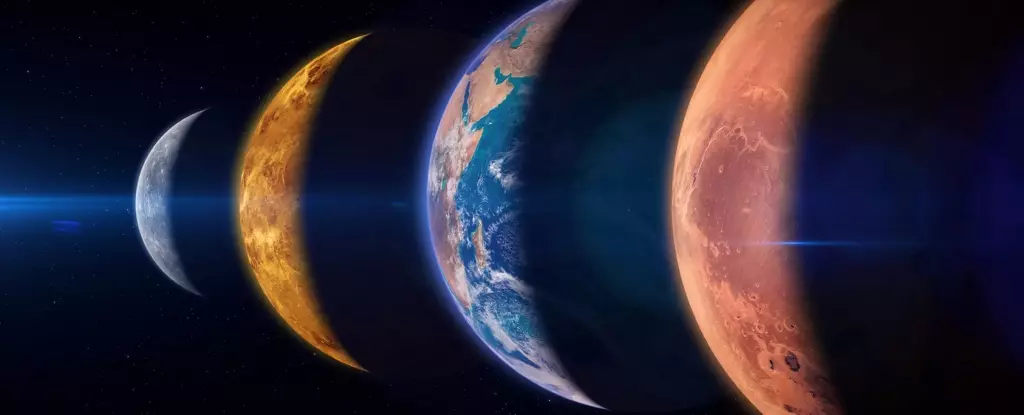On the evening of February 28, 2025, the night sky will present a breathtaking display as all seven planets of our Solar System—Mercury, Venus, Earth, Mars, Jupiter, Saturn, and Neptune—align in a remarkable configuration. This rare celestial phenomenon, known as a planetary alignment, offers astronomy enthusiasts and casual stargazers alike an extraordinary opportunity to witness a harmonious arrangement of our neighboring planets. While it’s not unheard of for some planets to cluster on the same side of the Sun, the sight of nearly all the planets lined up in a neat procession is an event that commands attention and appreciation.
Unlike the picturesque renditions often showcased in textbooks and digital illustrations, planetary alignments in reality are never perfectly straight. The planets do not march along an imaginary line in a flawless queue; rather, their positions are determined by their orbital paths and gravitational dynamics. The Solar System operates on a flat plane known as the ecliptic, where most planets follow relatively similar orbital inclinations. As they traverse their elliptical paths and occasionally align on the same side of the Sun, they create the visual spectacle that captivates astronomers and the public alike.
It is essential to understand that these alignments vary in frequency. Occasional alignments of three to eight planets are recorded, but significant configurations with six or seven planets lining up are far rarer. In particular, the upcoming 2025 alignment marks one of the few occasions in recorded history when all seven planets will be visible simultaneously. This peculiar cosmic scenario is the result of perfectly timed orbital mechanics, making it an exciting highlight for the astronomical community.
The visibility of this grand alignment will depend heavily on several factors, chiefly geographical location and weather conditions. Different regions of the world will experience varying levels of visibility for the planetary lineup. Enthusiasts looking to optimize their viewing conditions should research resourceful platforms that provide real-time celestial data. Websites like Time and Date feature interactive calendars that allow observers to set their desired viewing date, displaying detailed information on planetary rise and set times, as well as their positions in the night sky.
Stellarium, a sophisticated planetarium software, also offers valuable tools for those who wish to prepare in advance. By inputting your location and the date of the event, you can visually map the night sky and locate each celestial body in this planetary procession. For mobile users, the Sky Tonight app provides convenience by utilizing your smartphone’s GPS capabilities to deliver real-time positions of the planets directly to your device.
To fully experience and appreciate the beauty of this planetary alignment, equipment will play an essential role. While some planets may be discernible to the naked eye, clear visibility is often enhanced through the use of binoculars or telescopes. Investing in good-quality optics can transform your stargazing experience, allowing you to explore not just planetary alignments, but also the intricate details of individual planets and their atmospheres.
It is wise to begin preparations ahead of time, ensuring that your equipment is in good working order, and familiarizing yourself with the celestial map for the evening. Be sure to check the weather forecast as well. Clear skies, while desired, can sometimes prove elusive, so maintaining awareness of local weather conditions may lead to a more successful stargazing experience.
The planetary alignment on February 28, 2025, serves not only as a scientific curiosity but also as an occasion to connect with the universe around us. It invites us to step outside, look to the skies, and contemplate our place within the vast cosmos. Whether you are a seasoned astronomer or a novice enthusiast, this rare event can ignite a sense of wonder and curiosity about the mysteries of the Solar System.
The alignment of Mercury, Venus, Mars, Jupiter, Saturn, Uranus, and Neptune is more than just a visual feast; it symbolizes humanity’s enduring fascination with the heavens, a reminder of the celestial dance unfolding above us every night. As the event approaches, excitement will surely build—a perfect experience for anyone wishing to witness the grandeur of our Solar System aligned, if only for a fleeting moment.


Leave a Reply